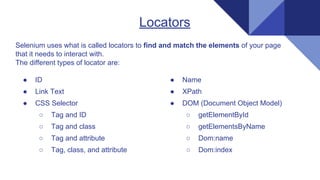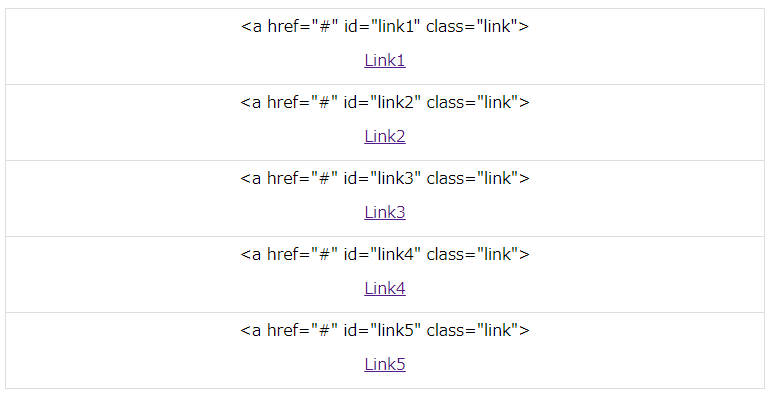‘Webdriver’ Object Has No Attribute ‘Find_Element_By_Xpath’
WebDriver is a popular web automation tool that allows developers to automate browser activities, such as filling out forms, clicking buttons, and navigating through web pages. It provides a range of methods that can be used to interact with elements on a web page.
Introduction to the find_element_by_xpath method
One of the key methods provided by WebDriver is the find_element_by_xpath method. This method allows developers to locate a specific element on a web page using an XPath expression. XPath is a language used for navigating XML documents and is commonly used in web automation to locate elements based on their attributes or hierarchical relationships.
The find_element_by_xpath method takes an XPath expression as an argument and returns the first element that matches the expression. If no element is found, it raises a NoSuchElementException.
Reasons for the ‘webdriver’ object attribute error
The error message “‘webdriver’ object has no attribute ‘find_element_by_xpath'” occurs when the find_element_by_xpath method is called on an instance of the WebDriver class, but the method doesn’t exist or is not recognized. There are several possible reasons for this error:
1. Outdated Selenium version: The find_element_by_xpath method was introduced in a later version of Selenium. If you are using an older version, it’s possible that the method is not available.
2. Typo or misspelling: Make sure that you are using the correct spelling and capitalization for the method. Python is case-sensitive, so even a small typo can lead to this error.
3. Incorrect instantiation of WebDriver: Ensure that you have properly instantiated the WebDriver class. If you have misspelled the class name or made an error in its initialization, the find_element_by_xpath method may not be recognized.
Troubleshooting steps for resolving the error
If you encounter the “‘webdriver’ object has no attribute ‘find_element_by_xpath'” error, there are a few troubleshooting steps you can take to resolve it:
1. Update Selenium: Check if you are using the latest version of Selenium. If not, update it to the latest version to ensure that you have access to all the available methods, including find_element_by_xpath.
2. Check method spelling: Double-check the spelling and capitalization of the find_element_by_xpath method. Even a small typo can cause the error.
3. Verify WebDriver instantiation: Make sure that you have correctly instantiated the WebDriver class. Ensure that the class name is spelled correctly and that the initialization is correct.
Alternative methods for locating elements using WebDriver
If you continue to encounter the “‘webdriver’ object has no attribute ‘find_element_by_xpath'” error, there are alternative methods you can use to locate elements on a web page:
1. find_element_by_id: This method allows you to locate an element by its HTML id attribute.
2. find_element_by_name: Use this method to locate elements by their HTML name attribute.
3. find_element_by_class_name: This method enables you to locate elements by their HTML class attribute.
4. Other locator strategies: WebDriver provides several other locator strategies, such as locating elements by tag name, CSS selector, link text, partial link text, and more.
Best practices for handling similar errors and exceptions
When working with WebDriver, it’s important to follow best practices for handling errors and exceptions.
1. Use try-except blocks: Surround your WebDriver code with try-except blocks to catch any exceptions that may occur. This allows you to handle errors gracefully and provide meaningful error messages to users.
2. Read documentation: Familiarize yourself with the official Selenium documentation to understand the correct usage of the methods and handle any deprecation warnings.
3. Stay updated: Keep up with the latest releases and updates of Selenium to stay aware of any changes or deprecations in the API.
FAQs
Q: What is the meaning of the error message “‘webdriver’ object has no attribute ‘find_element_by_xpath'”?
A: This error message indicates that the find_element_by_xpath method is not recognized or available for the WebDriver object.
Q: How can I resolve the “‘webdriver’ object has no attribute ‘find_element_by_xpath'” error?
A: Update Selenium to the latest version, double-check the spelling and capitalization of the method, and ensure correct instantiation of the WebDriver object.
Q: Are there alternative methods to find_element_by_xpath in WebDriver?
A: Yes, WebDriver provides alternative methods such as find_element_by_id, find_element_by_name, find_element_by_class_name, as well as other locator strategies like CSS selector and link text.
Q: What are some best practices for handling errors and exceptions in WebDriver?
A: Use try-except blocks to catch exceptions, read the documentation, and stay updated with the latest releases and changes in the Selenium API.
Attributeerror: ‘Chrome’ Object Has No Attribute ‘Find_Element_By_Xpath’
Keywords searched by users: ‘webdriver’ object has no attribute ‘find_element_by_xpath’ selenium.common.exceptions.invalidargumentexception: message: invalid argument: invalid locator, deprecationwarning: executable_path has been deprecated, please pass in a service object, name ‘by’ is not defined selenium, typeerror: ‘webelement’ object is not iterable, Find_element_by_link_text, Pip install selenium, From selenium webdriver common by import By, Find_elements_by_xpath
Categories: Top 57 ‘Webdriver’ Object Has No Attribute ‘Find_Element_By_Xpath’
See more here: nhanvietluanvan.com
Selenium.Common.Exceptions.Invalidargumentexception: Message: Invalid Argument: Invalid Locator
One common exception that users of Selenium might encounter is the “selenium.common.exceptions.InvalidArgumentException: message: invalid argument: invalid locator” error. This exception usually occurs when the web element locator provided to identify an element on a web page is invalid or incorrect.
The argument passed to the locator method must conform to the documented format, which varies depending on the locator strategy being used. Valid locators include CSS selectors, XPath expressions, and link text identification, among others. An invalid locator can occur due to a variety of reasons such as typos, incorrect syntax, or selecting an element that doesn’t exist on the web page.
When this exception is raised, it usually indicates that the Selenium script could not find the specified web element on the web page, due to the invalid locator provided. This could be an obstacle when automating web applications, as it hinders the process of interacting with elements and retrieving information for further testing.
Such an exception is commonly encountered by beginners and even experienced Selenium users, especially when writing complex scripts or dealing with dynamically changing web page elements.
To resolve this issue, it is crucial to verify and correct the locator used to identify the web element. Here are a few steps to follow to overcome this exception:
1. Double-check the locator: Verify that the locator syntax and strategy are correct. Ensure that you are using the appropriate locator type depending on the scenario. For example, use CSS selectors for styling-based identification and XPath for more complex element structures.
2. Inspect the web page: Use browser developer tools or Selenium’s driver.page_source method to inspect the web page’s HTML structure. This will help confirm whether the element exists and verify the path used to locate it.
3. Check for dynamic elements: Sometimes, web pages have dynamic content that changes after the initial page load, such as elements generated via JavaScript or AJAX requests. Make sure to consider any such dynamic elements by using explicit waits or dynamic locator strategies.
4. Observe timing issues: Delayed loading of web elements can also lead to this exception. Try using explicit waits, such as Selenium’s WebDriverWait or ExpectedConditions, to ensure the element is fully loaded before interacting with it.
Frequently Asked Questions (FAQs):
Q1. Why am I receiving the “invalid argument: invalid locator” exception?
A1. This exception occurs when the locator provided to find a web element is invalid. It could be due to typos, incorrect syntax, or selecting an element that doesn’t exist on the web page.
Q2. How can I fix this exception?
A2. To resolve this, verify and correct the locator used to identify the web element. Double-check the syntax and strategy, inspect the web page for the element’s existence, and account for any dynamic or delayed-loading elements.
Q3. Can a typographical error cause this exception?
A3. Yes, a typographical error or incorrect syntax in the locator can lead to this exception. It’s important to carefully review and correct any typing mistakes or syntax errors.
Q4. Is this exception specific to a particular programming language?
A4. No, this exception can occur in any programming language that uses Selenium. The root cause is usually related to the incorrect usage of Selenium’s locator methods.
Q5. How can I avoid this exception in the future?
A5. Paying attention to detail and thoroughly testing your locators before running scripts is essential. Regularly review and validate the locators used in your automation tests to avoid this exception.
In conclusion, the “selenium.common.exceptions.InvalidArgumentException: message: invalid argument: invalid locator” exception occurs when an invalid locator is provided to Selenium’s web element identification methods. By following the suggested steps and tips mentioned above, users can effectively resolve this exception and continue automating web applications with ease. Remember, carefully verifying and correcting locators is fundamental to ensuring the robustness and reliability of Selenium test scripts.
Deprecationwarning: Executable_Path Has Been Deprecated, Please Pass In A Service Object
In the world of software development, deprecation warnings are quite common. These warnings serve as notifications to developers that certain functionalities or methods will soon be removed or replaced in future versions. One such deprecation warning that has raised concerns among developers is the “DeprecationWarning: executable_path has been deprecated, please pass in a service object” warning.
This deprecation warning specifically applies to developers using Selenium, an open-source web testing framework. Selenium is widely used by developers to automate web browsers and conduct various tests and operations on web applications. The warning highlights a deprecated method, executable_path, which is commonly used to specify the location of the browser’s executable file, such as the ChromeDriver.
So, what does this deprecated warning mean and what are the implications for developers using Selenium? Let’s delve deeper into the topic and explore the answers to these questions.
Understanding the Deprecated Warning:
The “DeprecationWarning: executable_path has been deprecated, please pass in a service object” warning is essentially a notification from Selenium that one of its methods, executable_path, should no longer be used. This method has been marked as deprecated, indicating that it will be removed or replaced in future versions of Selenium.
The executable_path method was used to provide the path to the browser’s executable file, such as the ChromeDriver or GeckoDriver. However, Selenium now recommends passing a service object instead. A service object provides more flexibility and control over the configuration of the browser driver and associated services.
Implications for Developers:
For developers accustomed to using executable_path, this deprecation warning may require some adjustments in their Selenium codebase. Instead of directly specifying the executable_path, developers are now encouraged to use a service object.
A service object allows developers to configure various aspects of the browser’s driver, including the executable path, port, logging, and more. By passing a service object, developers gain greater control over the browser’s behavior and additional customization options.
To adapt to this deprecation warning, developers need to update their code by creating a service object and configuring it accordingly. The service object should then be passed as an argument when initializing the WebDriver. Once this adjustment is made, developers can continue to automate their browser testing without any disruption.
FAQs:
Q: Why was the executable_path method deprecated?
A: The executable_path method was deprecated to provide developers with more flexibility and control over the browser’s driver and associated services. The introduction of service objects allows for better customization and configuration options.
Q: How do I modify my code to pass a service object instead?
A: To modify your code, you need to create a service object and configure it with the required parameters, such as the executable path. Then, pass this service object as an argument when initializing the WebDriver. This adjustment will ensure your code remains compatible with the latest versions of Selenium.
Q: Are there any benefits to using service objects over directly specifying the executable path?
A: Yes, using service objects provides several benefits. Firstly, they offer more customization options, allowing you to configure various aspects of the browser’s driver and associated services. Secondly, service objects give developers greater control and flexibility when managing browser instances. Lastly, this change aligns Selenium with best practices in software development, providing a more efficient and maintainable solution.
Q: Will my existing code break if I don’t make the necessary adjustments?
A: Although your existing code may continue to function for now, it is strongly recommended to update your code to adhere to the deprecation warning. Ignoring the deprecation warning and not adapting to the new practice may result in compatibility issues or potential breakage in future versions of Selenium.
Q: Are there any other deprecation warnings I should be aware of in Selenium?
A: Selenium regularly introduces new updates and deprecations. It is always recommended to check the official documentation or release notes to stay informed about any deprecations or changes in Selenium. Keeping up-to-date with these warnings will ensure smooth transitions to newer versions and help maintain compatibility with the framework’s evolving ecosystem.
In conclusion, the “DeprecationWarning: executable_path has been deprecated, please pass in a service object” warning in Selenium signifies a necessary adjustment for developers using the executable_path method. By passing a service object instead, developers gain more control and customization options over the browser’s driver and associated services. Adapting to this deprecated warning ensures future-proof code and compatibility with new versions of Selenium. Remember to stay informed and up-to-date with the latest deprecation warnings to maintain a smooth and efficient development process.
Images related to the topic ‘webdriver’ object has no attribute ‘find_element_by_xpath’

Found 18 images related to ‘webdriver’ object has no attribute ‘find_element_by_xpath’ theme

















![Selenium] AttributeError: 'WebDriver' object has no attribute ' find_element_by_xpath' 에러 해결 Selenium] Attributeerror: 'Webdriver' Object Has No Attribute ' Find_Element_By_Xpath' 에러 해결](https://velog.velcdn.com/images/hippohami/post/e1ce08b9-a548-439b-999e-1948289752de/image.jpg)




























Article link: ‘webdriver’ object has no attribute ‘find_element_by_xpath’.
Learn more about the topic ‘webdriver’ object has no attribute ‘find_element_by_xpath’.
- python 3.x – AttributeError: ‘WebDriver’ object has no attribute …
- Fixing Selenium AttributeError: ‘WebDriver’ object has no …
- ‘WebDriver’ object has no attribute ‘find_element_by_id’
- ‘WebDriver’ object has no attribute ‘find_elements_by_xpath’
- AttributeError: ‘WebDriver’ object has no attribute … – GitHub
- WebDriver object has no attribute find_element_by_xpath
See more: nhanvietluanvan.com/luat-hoc